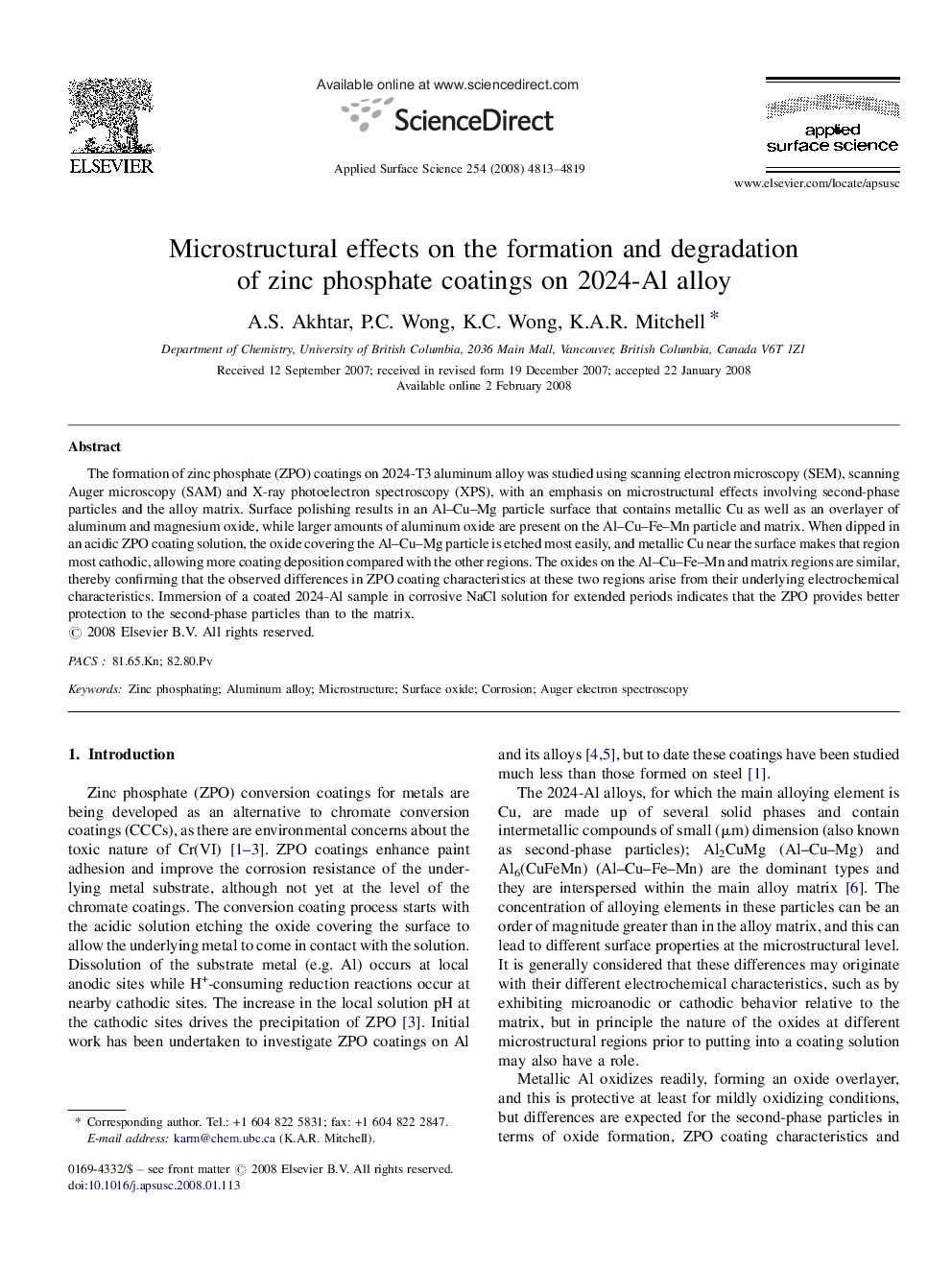| Article ID | Journal | Published Year | Pages | File Type |
|---|---|---|---|---|
| 5363950 | Applied Surface Science | 2008 | 7 Pages |
The formation of zinc phosphate (ZPO) coatings on 2024-T3 aluminum alloy was studied using scanning electron microscopy (SEM), scanning Auger microscopy (SAM) and X-ray photoelectron spectroscopy (XPS), with an emphasis on microstructural effects involving second-phase particles and the alloy matrix. Surface polishing results in an Al-Cu-Mg particle surface that contains metallic Cu as well as an overlayer of aluminum and magnesium oxide, while larger amounts of aluminum oxide are present on the Al-Cu-Fe-Mn particle and matrix. When dipped in an acidic ZPO coating solution, the oxide covering the Al-Cu-Mg particle is etched most easily, and metallic Cu near the surface makes that region most cathodic, allowing more coating deposition compared with the other regions. The oxides on the Al-Cu-Fe-Mn and matrix regions are similar, thereby confirming that the observed differences in ZPO coating characteristics at these two regions arise from their underlying electrochemical characteristics. Immersion of a coated 2024-Al sample in corrosive NaCl solution for extended periods indicates that the ZPO provides better protection to the second-phase particles than to the matrix.
